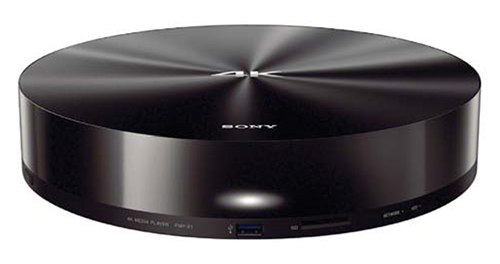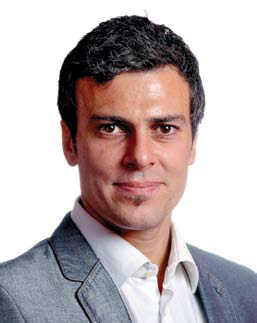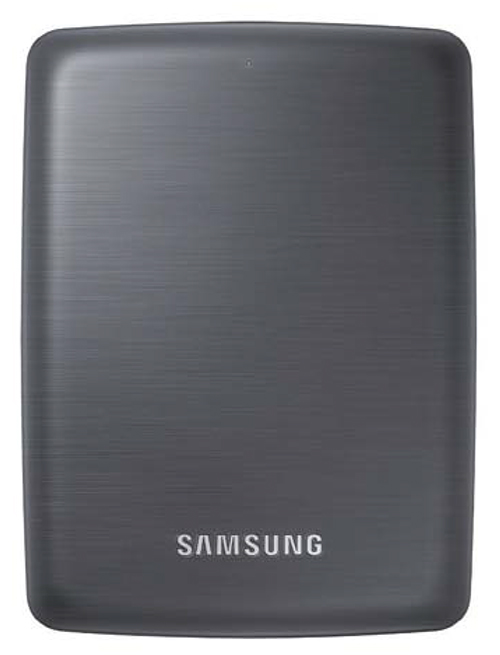A Missing Piece of the 4K Puzzle
NEW YORK—While there is no shortage of “repeats” on television, the pay-TV industry may be about to go through a repeat of its own. The arrival of 4K Ultra HD could in many ways be a replay of the roll-out of high definition a decade ago—arriving first via satellite operators.
In July, DirecTV CEO Mike White said that the satcaster will be able to supply on-demand 4K content later this year, with full 4K transmissions expected to be on track for next year or at the latest, 2016. White said he expected the satellite pay-TV service, which is currently in merger negotiations with AT&T, to offer VOD by the end of this year.
“We believe 4K will have broad appeal when there’s a convergence of reasonably priced 4K sets and more 4K content —similar to circumstances that sparked the HD revolution,” Jade Ekstedt, spokesperson for DirecTV, told TV Technology.
LOOK TO THE SKIES?
The arrival of 4K VOD via satellite thus is very much how HD first arrived to the masses, and it could also be used to position satellite pay-TV as an option for those earlier adopters who don’t mind breaking the bundles offered by cable providers, which typically can include phone and Internet.
Satellite could also have some early advantages in infrastructure according to some experts.
“Satellite could have the edge now,” said Peter Ostapiuk, vice president of media product management at Intelsat. “There is a lot of bandwidth required to transmit 4K to a mass audience, and satellite is probably the most effective way to do that and the most cost-efficient way to reach that mass audience.”

Samsung’s $400 UHD Pack (L) and Sony’s $700 FMP-X1 4K media player are currently among the only sources of UHD content for consumers.
Get the TV Tech Newsletter
The professional video industry's #1 source for news, trends and product and tech information. Sign up below.

Fabio Murra, head of TV marketing at Ericsson Fabio Murra, head of TV marketing at Ericsson concurs. “Satellite providers will have that advantage in being able to manage bandwidth,” he said. “The transponder availability from satellite gives that advantage.”
Internationally some satellite providers have already begun rolling out 4K content.
In Korea and Japan, satellite pay-TV operators are already broadcasting a few hours of UltraHD content daily, with KT SkyLife in Korea planning to offer three UltraHD channels commencing in 2015, according to Alan Crisp, analyst at NSR in Hong Kong. “Cable TV and terrestrial platforms are generally taking a ‘wait-and-see’ approach in the short term to 4K/UHD,” he said. (NHK is setting its sights higher, with the goal of launching 8K broadcasts by the 2020 Olympics in Tokyo.)
Last month, in an NSR report, Crisp forecast that satellite broadcasters could provide more than 820 UHD channels worldwide by 2025, predicting that falling TV set prices and the increasing availability of content will prime the market.
This isn’t to say that the cable providers will be left behind. Comcast has pledged to distribute content in 4K as soon as the industry is ready and at the 2014 International CES, announced a partnership with Samsung Electronics to deliver 4K VOD content to 2014 Samsung UHDTVs via the Internet through the Xfinity TV 4K app. A spokesperson for Comcast told TV Technology last month that the companies are “on track” to launch the app by the end of the year.
“While advancements in 4K are happening quickly, much the way HD did a few years ago, the fact remains that there is currently very limited content available in 4K UHD,” the spokesperson said. “Most programmers are still delivering programming in 1080i [or below] today and the number of consumers with a 4K television or device is also very low. If/when adoption by networks and studios is greater, more content is produced and ready for distribution in 4K, our network and set-top boxes will be ready to distribute it.”
GOING OVER THE TOP
It won’t be just cable vs. satellite in delivering 4K content as over-the-top players including Netflix have also announced efforts to deliver content in the coming months as well. However, the bandwidth issue is one that will again rear its ugly head.
“We’ve heard that Netflix and other OTT services will have 4K content,” Murra said. “However, they face an opposite issue including a bandwidth constraint because they can’t get enough bandwidth from the ISPs, but they will have an advantage as they are targeting a variety of devices.”
While cable and even satellite services will be faced with the issue of updating set-top boxes for the OTT providers, this will be far less of an issue.
“OTT will target devices including the TV and tablets that support the resolution,” Murra said. “These devices are replaced every two years whereas a set-top box is replaced every 10 years or so.”
CHICKEN AND EGG
There are other hurdles for 4K adoption that won’t be easily overcome however. One factor that is in essence a replay of an issue that occurred with HD— namely that consumer demand was slowed due to limited content—while content creators were slow to roll out content in HD because of low adoption rates.
“On the business side there is little value proposition,” Ostapiuk said. “It is a ‘chicken and egg’ situation, as there is precious little content in 4K available right now.”
Moreover, lower resolution content, including a lot of today’s 720 offerings, won’t look all that good on the sets especially because to truly appreciate 4K will entail having a much larger screen. However, this time many content creators are already future-proofing for the next generation TV sets as content is being produced.
“A lot of studio content is already shot in 4K,” said Keith Wymbs, chief marketing officer at Elemental Technologies in Portland, Ore. “In addition, current HD content can be upconverted from HD to 4K, and moreover 4K will have a dramatic effect in sports.”
However, as noted, pay-TV operators will have the issue of updating those set top boxes as well.
“This is an expensive thing for the pay- TV operator but the quality will counterbalance the cost,” added Wymbs. “The adoption of 4K is also different from HD in the fact that many TVs are now being launched in the market that can decode 4K at the set. Samsung, Panasonic and Sony are providing HEVC decoders built in so users can view the content via apps in the TV.”

AND THEN THERE’S STANDARDS
Whichever content delivery method is utilized to deliver 4K to the consumer at home there is finally some agreement on what 4K will be required to offer, including 60fps content as well as HEVC encoding, which can ensure the content quality to be on par with what the TV manufacturers have promised. This codec is the successor to H.264, and has been used in numerous 4K trials over the past year including content recorded at the Sochi Olympic Games and the recent FIFA World Cup.
“HEVC encoding today can encode 4K video streams into 10-25 Mbps without issue,” said Crisp. “Indeed, satellite operator Hispasat found that increasing the bitrate beyond 18 Mbps had no perceptible difference for a typical viewer. At this bitrate, it is feasible for satellite operators to broadcast multiple channels directly to consumer’s homes, or for satellite distribution to cable TV and IPTV platforms.”
Ericsson has conducted more than 40 trials using HEVC, which Murra said could provide as much as twice the differential in bitrate. HEVC could also help solve some of the bandwidth issues.
“While HEVC provides approximately a 64 percent reduction in the amount of bandwidth for the same level of video quality, it is also able to include a 110 percent increase in the breadth of colors available—color gamut—but also a greater color precision; 10-bit color,” added Crisp. “What this means is that a 10-bit screen can produce over a billion colors, as opposed to most content today which is 8-bit or about 16 million colors.”
He noted that this helps explain why consumers are much more excited about UltraHD after seeing it in person. “It’s not just the higher resolution, but also the increased color ranges that can’t be appreciated from existing screens, and content, today,” Crisp said.
